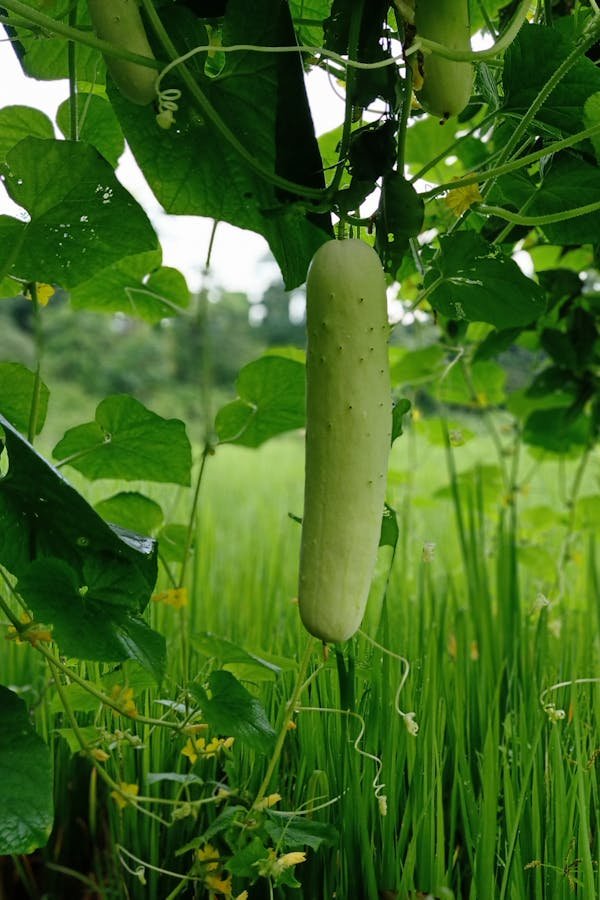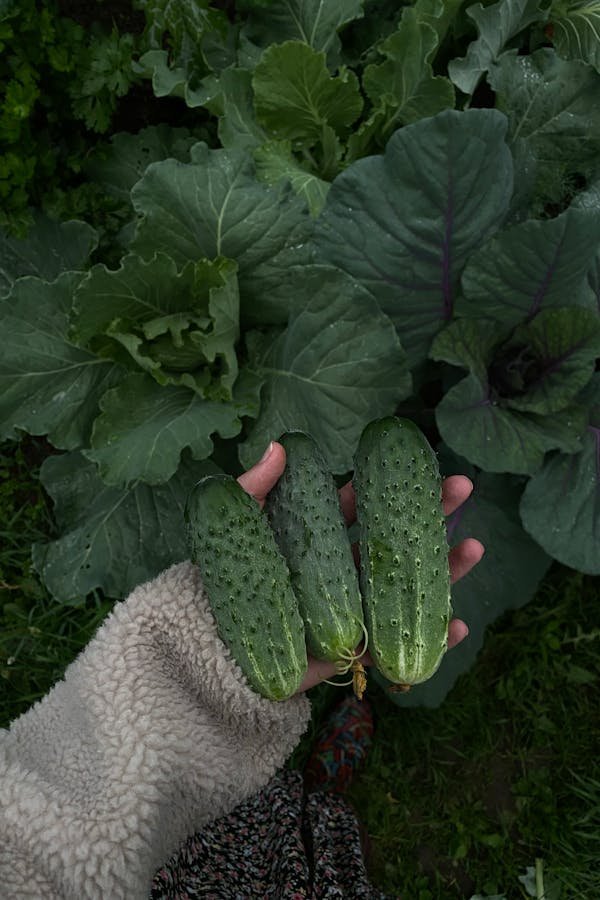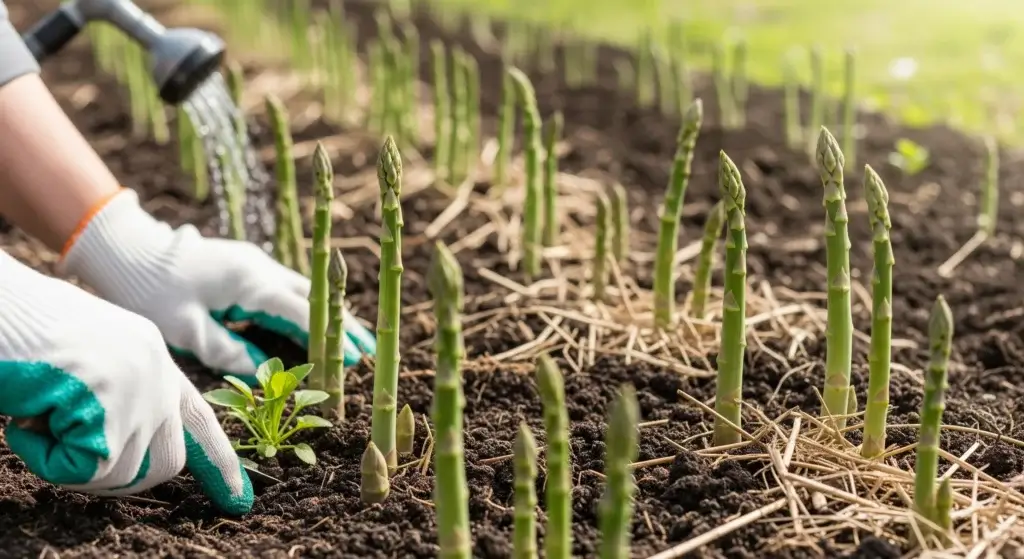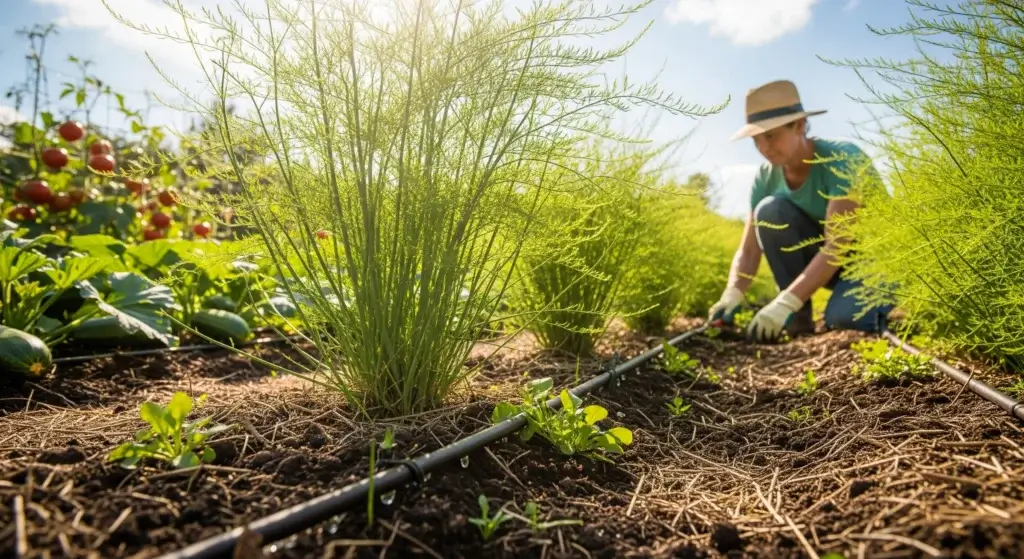
Cucumbers are a popular and delicious vegetable, but they can sometimes face various problems during growth.
Understanding the causes and solutions to common cucumber issues can help gardeners and farmers maintain healthy cucumber plants.
In this blog post, we will discuss the basic requirements for cucumber growth, common cucumber problems, and their solutions.
Basic Requirements for Cucumber
Cucumbers, while seemingly simple plants, have specific needs to thrive and produce those delicious fruits (yes, they’re technically fruits!).
Here’s a breakdown of the essential requirements for happy cucumbers:
- Sunlight: Cucumbers are sun-worshippers! They need at least 6-8 hours of direct sunlight daily for optimal growth and fruit production.
- Temperature: Cucumbers prefer warm temperatures, ideally between 70-85°F (21-29°C). They’re sensitive to frost and cold snaps.
- Water: Consistent moisture is crucial for cucumbers. They don’t tolerate drought well, but soggy soil can lead to root rot.
- Soil: Cucumbers love well-draining, fertile soil. Amend your planting area with compost or aged manure to provide essential nutrients and improve drainage.
- Support: Cucumbers are vining plants that appreciate some support to grow vertically. Trellises, cages, or even string lines can help them climb and maximize space usage.
- Spacing: When planting cucumber seeds or seedlings, ensure proper spacing to allow for good air circulation and prevent overcrowding.
- Nutrients: Cucumbers are heavy feeders and benefit from regular fertilization throughout the growing season.
- Pollination: Most cucumber varieties are monoecious, meaning they have separate male and female flowers on the same plant.

- Read also: Troubleshooting Tomato Leaf Problems
- Read also: A Guide on How to Care for Snake Plants Outdoors
Common Cucumber Problems and Solutions
Encountering issues with cucumber plants in your garden can be disheartening, but understanding common problems and their solutions is crucial for fostering a healthy crop.
Let’s delve into some prevalent cucumber problems and effective remedies:
Wilting leaves
Cause
Wilting leaves can result from overwatering, underwatering, or nutrient deficiencies.
Excess water may lead to root suffocation, while insufficient water or nutrient imbalance can impede the plant’s ability to thrive.
Solutions
Adjust your watering schedule to strike the right balance.
Ensure proper soil moisture by checking the soil regularly.
Address any nutrient deficiencies by using a balanced fertilizer to provide essential elements like nitrogen, phosphorus, and potassium.
Stunted growth
Cause
Stunted growth may stem from poor soil drainage, nutrient deficiencies, or pest infestations.
Inadequate drainage hampers root health, nutrient imbalances restrict proper development, and pests can directly impede growth.
Solutions
Improve soil drainage by amending the soil with organic matter to enhance water absorption.
Address nutrient deficiencies by applying a suitable fertilizer to provide the necessary nutrients.
Implement pest control measures, such as using organic pesticides or introducing beneficial insects, to protect the plants from potential threats.
Yellowing leaves
Cause
Yellowing leaves can be attributed to nutrient deficiencies, overwatering, or pest activity.
Lack of essential nutrients, excess water leading to root issues, or pests feeding on the plant contribute to leaf discoloration.
Solutions
Correct nutrient deficiencies by incorporating a well-balanced fertilizer.
Adjust the watering schedule to prevent overwatering, ensuring proper soil moisture levels.
Implement pest control strategies, like applying neem oil or introducing natural predators, to safeguard the cucumber plants from harmful insects.
Blossom end rot
Cause
Blossom end rot is often a result of calcium deficiency or irregular watering.
The lack of calcium hinders the proper development of the fruit, leading to dark, sunken areas on the blossom end.
Inconsistent watering can exacerbate the issue by hindering the plant’s ability to absorb calcium.
Solutions
Ensure proper calcium levels in the soil by incorporating lime or gypsum.
Maintain even watering throughout the growing season, as fluctuations in soil moisture can contribute to calcium uptake issues.
Mulching around the plants helps regulate soil moisture and temperature.
Cucumber powdery mildew
Cause
Cucumber powdery mildew is a fungal infection that manifests as a white powdery substance on the leaves.
This common issue occurs in warm, dry conditions, creating an ideal environment for the fungus to thrive.
Solutions
Apply fungicides specifically designed for powdery mildew control.
Ensure proper air circulation by spacing plants adequately and pruning excess foliage.
Avoid overhead watering, as wet foliage creates a favorable environment for fungal growth.
Cucumber beetles
Cause
Cucumber beetles, often striped or spotted, can lead to severe damage as they feed on cucumber plants.
These pests transmit bacterial wilt and may cause harm to both foliage and fruit.
Solutions
Utilize insecticides, choosing those suitable for cucumber beetle control.
Implement companion planting with crops like radishes or nasturtiums, which may deter cucumber beetles.
Regularly monitor plants for early signs of infestation, such as yellowing leaves or the presence of beetles, and take prompt action.

How to Prevent Cucumber Problems?
Cucumber plants are fantastic additions to your garden, offering refreshing fruits throughout the season.
But just like any other veggie, they can face challenges.
The good news is that prevention is key!
Here are some proactive strategies to keep your cucumber plants healthy and happy:
Choosing the right variety
- Disease resistance: Opt for cucumber varieties known for resistance to common diseases like powdery mildew and scab.
- Maturity dates: Consider your local climate and choose varieties with maturity dates suited to your growing season.
Planting with care
- Soil Preparation: Amend your planting area with plenty of compost or aged manure to improve drainage and provide essential nutrients.
- Proper spacing: Ensure adequate spacing (typically 12-24 inches between plants) to allow for good air circulation and prevent diseases that thrive in stagnant air.
- Support system: Provide a trellis, cage, or string lines for your cucumber vines to climb. This promotes healthy growth, maximizes space usage.
Watering wisely
- Consistent moisture: Cucumbers crave consistent moisture but don’t tolerate soggy soil. Water regularly, aiming to keep the soil evenly moist but not waterlogged.
- Mulch: Apply a layer of organic mulch around your cucumber plants. This helps retain moisture, regulate soil temperature, and suppress weeds that compete for resources.
Optimum growing conditions
- Sunlight: Cucumbers are sun-loving plants. Ensure they receive at least 6-8 hours of direct sunlight daily for optimal growth and fruit production.
- Temperature control: These warm-weather veggies thrive in temperatures between 70-85°F (21-29°C).
Organic pest control
- Monitoring: Regularly inspect your cucumber plants for signs of pests or diseases. Early detection allows for prompt intervention with natural methods.
- Companion planting: Consider planting herbs like basil or dill near your cucumbers. These can deter some pests with their strong scents.
Additional tips
- Rotate your crops: Planting cucumbers in the same location year after year can increase the risk of disease.
- Deadheading: Regularly remove spent flowers (deadheading) can encourage new flower and fruit production.

- Read also: Troubleshooting Tomato Stem Problems
- Read also: Purple Prickly Pear Cactus Care
Conclusion
To foster thriving cucumber plants, it’s essential for gardeners and farmers to grasp the fundamental needs for cucumber growth and be aware of potential issues.
By understanding these basics, growers can take proactive measures to address causes and prevent common problems, ultimately ensuring a successful and fruitful harvest.



